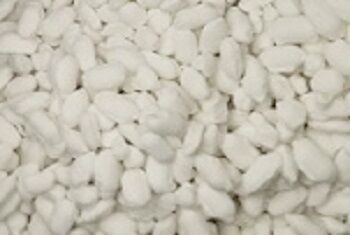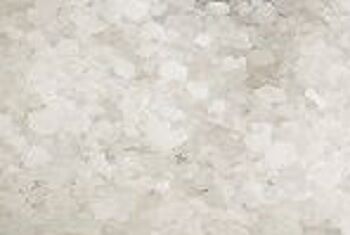UPDATED: March 12, 2022
You’re in the market for a new water softener, and it’s been quite a while since you have looked at water softeners. You have heard that they have water softeners that don’t need to use any salt. You have seen the Kinetico water softeners, are they salt-free?
A Kinetico water softener needs to use the sodium ions from salt to regenerate its water softener resin so the resin can continue to remove hard minerals from your water. Without sodium ions, a Kinetico water softener will not be able to soften your water.
There has been an awful lot of talk about water softeners that claim to not need salt to soften your water. But in reality, the hardness from the water has to go somewhere, and it has to be removed from the water softening resin, so let’s see how a Kinetico water softener works to soften your water.
Why a Kinetico water softener needs to use salt to soften water.

A Kinetico water softener requires sodium (salt) ions to regenerate its water softening resin in the same way as other water softeners do. Without salt, a Kinetico water softener will not be able to
A Kinetico water softener may look very different from other water softeners, but they have a water softening resin in them to remove hardness from water that works very much the same way as other water softeners.
In order to make their water softeners more efficient, Kinetico uses a fine mesh resin that fills the entire tank, unlike most water softeners that have the top portion of the tank free of resin to allow the resin to fluff up during regeneration.
But even the finer resin used by Kinetico still removes hardness from water in the same way as regular resin. Through ion exchange!
Check out this quick video about how a water softener uses salt to make water soft!
As water flows over the water softening resin inside a water softener’s tank, the hard minerals cling to the softening resin, leaving the water free of hard minerals, in other words, soft.
Since the water softening resin cannot continue to hold limitless hard minerals to it, the hard minerals need to be periodically removed from the resin. This is where the salt is needed.
The Kinetico water softener dissolves a pre-set amount of salt to create a brine (very salty water).
Then the water softener flushes the brine over the water softening resin that is in its tank. As the brine flows over the resin, the hard minerals fall off of the resin and are replaced by the sodium ions from the brine.
The hard minerals are then rinsed away along with the brine, leaving the resin able to remove more hard minerals from the water.
What kind of salt does a Kinetico water softener use?
A Kinetico water softener will work fine with any kind of water softening salt, but I highly recommend using salt pellets, or solar water softener salt because they are considerably cleaner than regular water softener crystals.


The reason that this is important with a Kinetico water softener is that a Kinetico water softener only uses one water float shut-off mechanism to stop the water from flowing into the salt tank. If this float shut-off fails, you could have a flood on your hands.
Inside of the float, assembly is a small shut-off that has a single washer that stops the water from filling the Kinetico water softener salt tank. If even a tiny grain of dirt that came with your water softener salt gets stuck on this washer, it may not shut off correctly.
This may not sound all that bad, but this means that the water softener will continue to fill the water softener salt tank, and it will overflow.
Worse yet, the water overflowing out of the tank will be saltwater, which will leave salt crystals on the floor when the water dries.
You can usually sweep up most of the salt, but you will have to mop the floor several times to get all the salt off.
Since a Kinetico water softener can regenerate at any time of day, this could happen in the middle of the night, and you could wake up to a flood. A good way to alert you if this were to happen is by installing a water leak detector that will shut off the water going to the system.
How much salt does a Kinetico water softener use?
A Kinetico water softener does use salt, but Kinetico water softeners are very efficient, and therefore they use less salt than many other water softeners, although many people don’t feel that the amount saved on salt justifies the additional initial investment.
Kinetico water softeners are a very intricate machine, that costs significantly more than a more conventional electric water softener.
Since Kinetico water softeners require salt in the same way as an electric water softener, the only significant benefit is that they use less salt (which is relatively cheap), and about the same amount of electricity as a clock radio.
Does Kinetico make a salt-free water softener?
Kinetico makes a wide range of water treatment systems for many different types of water situations, and many of them do not use salt.
Kinetico also makes “Salt-Free” water conditioners that do NOT use any salt but they do NOT actually remove hardness from your water.
Some Kinetico systems are for acid neutralization, chlorine removal, and odor removal, and these systems do not normally use any salt.
But ALL Kinetico “Water Softeners” do use salt!
How can I remove the salt that a Kinetico water softener adds to my water?
Just because Kinetico water use salt to regenerate the water softening resin inside their tanks, does not mean that they are adding salt to your water. But, there will be some extra salt in your water after the Kinetico water softener regenerates its water softener resin.
Fortunately, this is a simple problem to fix!
A common water filter that you might use to filter out sediment that comes up from your well will not remove dissolved salt from your water, but a semi-permeable membrane will!
This is what a reverse osmosis drinking water system uses to remove dissolved solids like salt from your water. Because of ever-advancing technology, they have become very affordable, and do a great job of reducing the salt in water.


I have had a Kinetico since January 2021, How long does it take to clear the limescale from the pipes as it has been 6 months now and the water is still effecting my skin quite badly, so I am having to collect rain water to wash with. Is there chemicals in the softener that could be effecting my skin.
Hello Sandra and thank you for the question.
Depending on how much hardness build-up there is in your homes’ plumbing, it could take a few months or it could take a year. It is really hard to say.
A water softener does not add any chemicals to your water and it should not be adding any significant sodium to the water to cause any problems.
Because I don’t know the characteristics of your water, I don’t know if you have excessive sodium in your water or if it may be very acidic which could be causing your skin irritation.
I would contact your Kinetico salesperson to discuss the problem and find out the water test results from when they tested your water for the water softener.
Then I would suggest that you talk to your doctor about the test results and how they might be affecting your skin.
I would also ask your salesperson about returning to re-test your water to make sure that the water is soft. If your Kinetico water softener is not working correctly, you may be having a problem because you are still getting hard water.
You can also test your water hardness using simple water hardness test strips that you can find HERE!
I hope this was helpful.
Paul